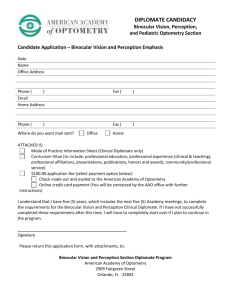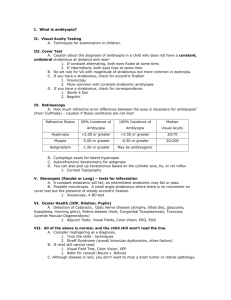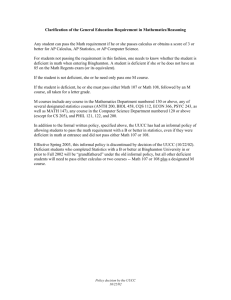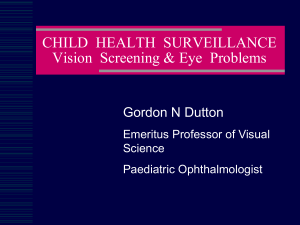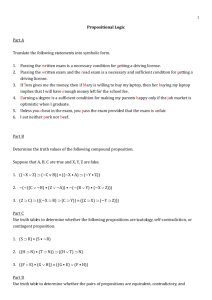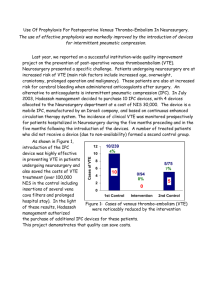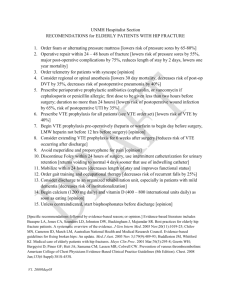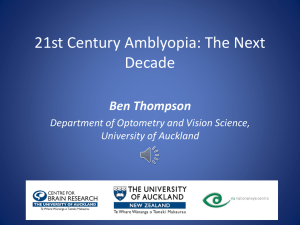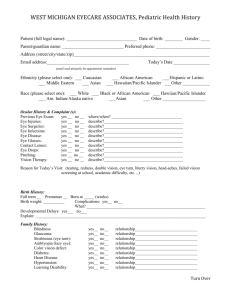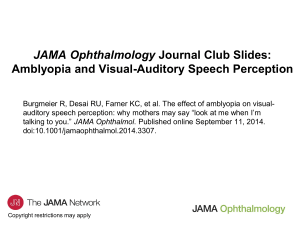outline23918
advertisement
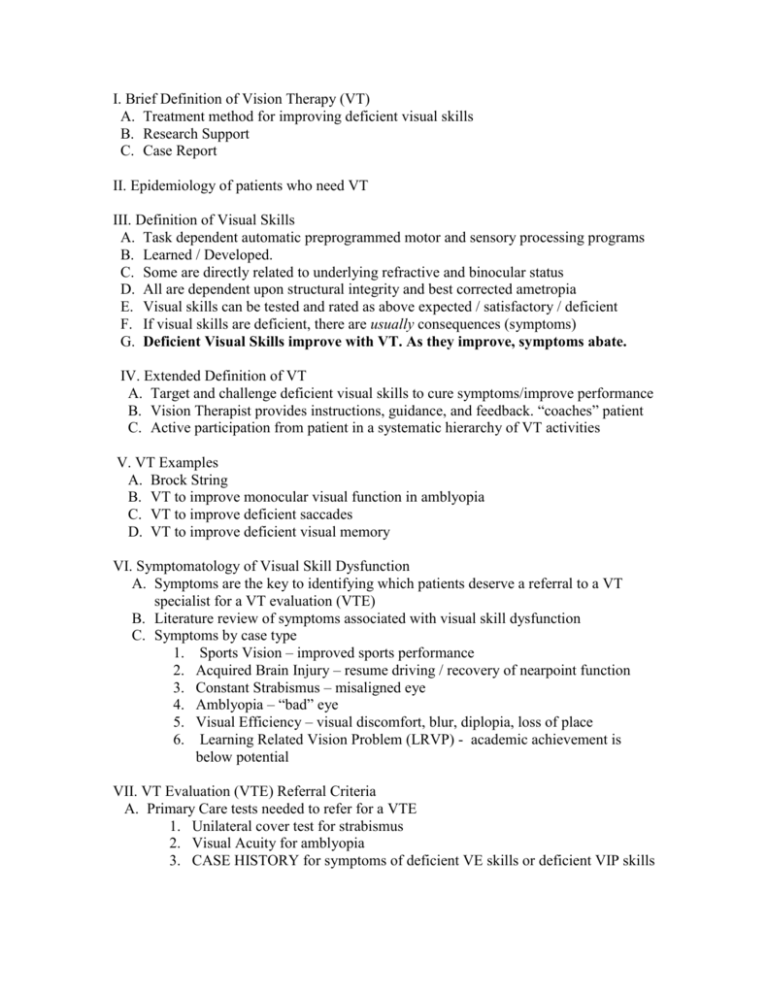
I. Brief Definition of Vision Therapy (VT) A. Treatment method for improving deficient visual skills B. Research Support C. Case Report II. Epidemiology of patients who need VT III. Definition of Visual Skills A. Task dependent automatic preprogrammed motor and sensory processing programs B. Learned / Developed. C. Some are directly related to underlying refractive and binocular status D. All are dependent upon structural integrity and best corrected ametropia E. Visual skills can be tested and rated as above expected / satisfactory / deficient F. If visual skills are deficient, there are usually consequences (symptoms) G. Deficient Visual Skills improve with VT. As they improve, symptoms abate. IV. Extended Definition of VT A. Target and challenge deficient visual skills to cure symptoms/improve performance B. Vision Therapist provides instructions, guidance, and feedback. “coaches” patient C. Active participation from patient in a systematic hierarchy of VT activities V. VT Examples A. Brock String B. VT to improve monocular visual function in amblyopia C. VT to improve deficient saccades D. VT to improve deficient visual memory VI. Symptomatology of Visual Skill Dysfunction A. Symptoms are the key to identifying which patients deserve a referral to a VT specialist for a VT evaluation (VTE) B. Literature review of symptoms associated with visual skill dysfunction C. Symptoms by case type 1. Sports Vision – improved sports performance 2. Acquired Brain Injury – resume driving / recovery of nearpoint function 3. Constant Strabismus – misaligned eye 4. Amblyopia – “bad” eye 5. Visual Efficiency – visual discomfort, blur, diplopia, loss of place 6. Learning Related Vision Problem (LRVP) - academic achievement is below potential VII. VT Evaluation (VTE) Referral Criteria A. Primary Care tests needed to refer for a VTE 1. Unilateral cover test for strabismus 2. Visual Acuity for amblyopia 3. CASE HISTORY for symptoms of deficient VE skills or deficient VIP skills B. Strabismus present after best SRx provided and parent / patient concerned. 1. Intermittent OR amblyopia OR ≠ large magnitude*>>> refer for VTE 2. Constant AND no amblyopia AND large magnitude* a. Young (< 3 years) >> Refer for EOM surgery consult b. Sensory fusion is hopeless (deep ARC, deep suppression). There is no potential for improvement >> Refer for EOM surgery consult c. Sensory fusion can be improved with VT >>> refer for VTE *Large Magnitude = ET > 20 XT > 25 Vertical Tropia > 10 (Calaroso / Rouse Clinical Management of Strabismus, pp 148-55) C. Amblyopia 1. Amblyopia due to unilateral strabismus >>> refer for VTE 2. Amblyopia due to anisometropia a. Cured with your treatment plan, no referral needed b. Residual binocular vision problem (including suppression or reduced stereopsis) after your treatment plan >>> refer for VTE D. Visual Efficiency Symptoms (asthenopia, intermittent blur, diplopia, DKP) 1. Cured with your primary care treatment (ametropia Rx, prism, plus add, Home VT, ergonomics) and no VIP related symptoms, no referral needed 2. Primary care Tx does not cure symptoms >>> refer for VTE 3. Dominant symptom is diff keeping place while reading >>> refer for VTE E. Learning Related Vision Problem symptoms – always refer (please). F. Acquired Brain Injury & Sports Vision - refer VIII. Reading References and Resources 1. AOA Clinical Practice Guidelines: Accommodative and Vergence Dysfunction Amblyopia Learning Related Vision Problem Strabismus: Esotropia and Exotropia 2. Scheiman MM Rouse MW. Optometric Management of Learning Related Vision Problems. 2nd ed. Mosby 2006 3. Wesson MD. Diagnosis and management of reading dysfunction for the primary care optometrist. Optom Vis Sci 70 (5) 1993: 357 – 68. 4. Borsting E, Rouse MW. Detecting learning-related visual problems in the primary care setting. J Amer Optom Assoc 65 (9) 1994: 642 – 50. 5. SCCO Website (scco.edu) > Eye Care Center > Services We Offer > Vision Therapy 6.Amer Acad Optometry Website (aaopt.org) > About > Position Papers (VT, Vision/Learning, ABI) 7.College of Optometrists in Vision Development (covd.org)
